Fragmentation Grenade: The Violence of Hybridity
With thanks to Nomi Stone
Nomi and I come together on hybridity — a form, a site, where disparate elements come together.
She says hybridity is treated as freedom, but often, what goes unacknowledged is its violence. These two concepts also come together in the hybrid. They collude. They collide.
Hybridity as collision, infarction, infection.
Nomi and I are considering my “Consider the Lobster Mushroom,” a hybrid piece about hybrids that uses the metaphor of the lobster mushroom which, “contrary to its common name, is not a mushroom but the result of a parasitic fungus having infested a host mushroom in a peculiar symbiosis.” It ends, “Is this a craft essay infected by a lyric essay, or a lyric essay infected by a craft essay?”
Joyelle McSweeney’s necropastoral, the cordon sanitaire revealed as permeable membrane easily pierced, infiltrated, infected.
Hybridity as moving between forms, unfreely. Transformation as a kind of violence. Andersen’s mermaid de-tailed, each human step like stepping on swords. Ovid’s Metamorphoses as origin story: Syrinx turned reed, cut and punctured into panpipes; Daphne’s skin encrusted with bark. The persistence of psychic experience, how we internalize it; infected by it, it invades our dream spaces.
In Dictee Therese Cha’s Korean mother becomes Manchurian; Victoria Chang’s parents flee China for the American Dream in Dear Memory. Attempts to address and make sense of their memories, a hyperdocumentation of records and stories and images, nonetheless can only document what can’t be said, a trauma recorded deep in their tree rings.
Nomi and I cross messages on grafting. When grafting trees, the upper part or scion (selected for its superior flowers or fruit) is notched and inserted into the bottom or inferior part or rootstock, a process called inosculation. It sounds pretty, like kissing. But scions are always trying to force kisses onto their inferiors, their rootstock. Ask Daphne about this. Ask Sally Hemings.
The violence of trying to fit content to a certain aesthetic form. The poetics of impurity.
Wendy Rawlings’ “Let’s Talk About Shredded Romaine Lettuce” tries to twine the narrative of her niece nearly dying of an E. coli infection together with iPads and bagged salad, an uneasy alliance that mimics the imbalance between Western consumption and workers’ rights. Every time she thinks she has a handle on the topic, another pops up to take its place. At several points she stops, switches tracks, doubles back, then admits “I think I’m losing control of this story.”
Hydra, she of branched heads ever-sprouting who cannot be controlled, daughter of the half-snake half-woman-bodied Echidna, mother of monstrous births.
The French bulldog, second most-popular dog in America, is bred for a certain aesthetic form — small, stocky, with broad square-shaped heads and short noses — despite the fact that the puppies’ broad, square-shaped heads can’t be birthed, must be cut from their mothers’ small, stocky bodies to fulfill Western consumption.
Sometimes unstable content can only give birth to itself, breaking or tearing through form in a way that leaves a trace, a wave of mutilation.
Both West and East have engaged in rape as a weapon of war, during invasions, colonizations.
Both West and East currently engage in hybrid warfare, hydra-headed: a blend of unconventional destabilizing techniques — propaganda, deception, cyberattacks, sabotage — as well as conventional weapons. The failure of authoritarianism pitting against the failure of democracy. Both election hacking and fragmentation grenades leave ragged edges.
I think I’m losing control of this essay.
Hybridity as painful failure to contain, documenting its own failure. The fragmented language betrayals of Lee Ann Roripaugh’s Dandarians. The attempts to negotiate identity as a transnational, transracial adoptee – a birthed body crossing borders – in the fragmented narrative of Sun Yung Shin’s Unbearable Splendor. Boully’s The Body, accessible only via the fragments of footnotes. A rearticulation. Recently, Boully tweeted:
When I was sending out excerpts of The Body, one editor, who is a famous writer, wrote on the rejection slip, “I don’t even know what this is.”
I saved that rejection like a love letter.
Fragment, from frangere, “to break.” Is breaking more violent — to be ripped, shattered — what Sam Cha, in his fragmented essay on Sun Yung Shin’s collection, calls “Torn into sections…. A torn form for the torn identity”? While hybridity might be freeing for some, a gentle blend or blur of boundaries, the form which is not one, it may also be the best form to represent rupture. It’s the fragments that do the most damage, splintering, ripping through the body of a piece.
Is this a craft essay infected by a lyric essay? Or a violent joining, signifying scar?
Sources:
Boully, Jenny. Tweet, February 3, 2022. https://twitter.com/JennyBoully/status/1489310874426912779
Czerwiec, Heidi. “Consider the Lobster Mushroom.” Brevity blog, November 21, 2016 https://brevity.wordpress.com/2016/11/21/consider-the-lobster-mushroom-being-a-brief-theory-of-the-craft-of-creative-nonfiction/
Cha, Sam. “Unbearable Splendor: Against ‘Hybrid’ Genre; Against Genre.” Assay: A Journal of Nonfiction Studies (5.2) https://www.assayjournal.com/sam-cha-8203unbearable-splendor-against-hybrid-genre-against-genre-52.html
Rawlings, Wendy. “Let’s Talk About Shredded Romaine Lettuce.” Places Journal, March 2014. https://placesjournal.org/article/lets-talk-about-shredded-romaine-lettuce/








